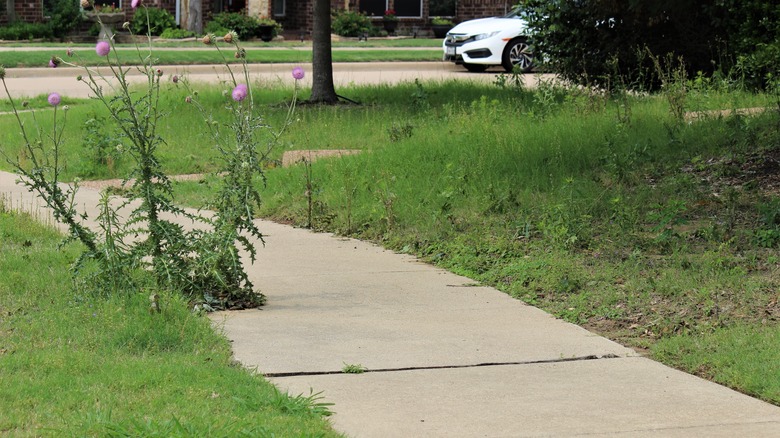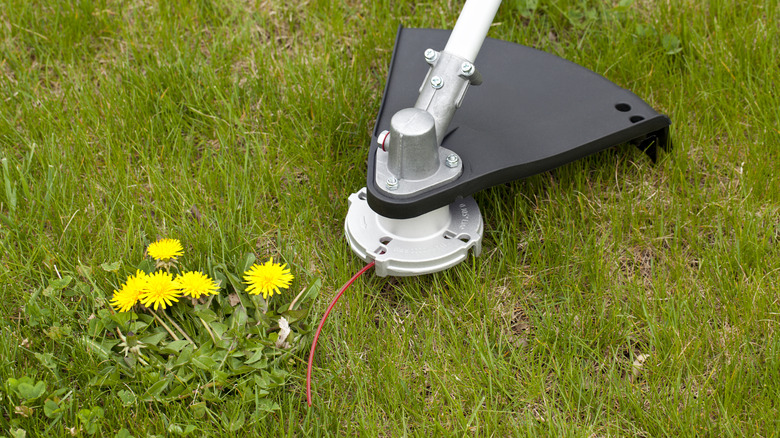Prevent Weeds From Taking Over Your Lawn With A Helpful Removal Tip
As sunlight and temperatures increase, weeds have easy access to all of the natural resources they need to grow and propagate, leaving you with a part-time job of trying to effectively control their spread. Unfortunately, methods for getting rid of weeds in your garden involve either back-breaking weed pulling or employing the use of harsh chemicals to stop the weeds in their tracks. However, there's another, more effective approach that can give you the upper hand in the battle against the weeds.
Before learning about this helpful removal tip, a brief lesson on the life cycle of weeds is warranted. Most weeds will spread by seed; it is precisely this going-to-seed process that is integral to their survival and reemergence in your yard. Once a weed's seeds fall to the ground, they will stay in the soil for years (which is why your summer weed-pulling sessions feel like déjà vu. You have, indeed, been here before). Instead of digging or hand pulling weeds out by their root systems, a better approach is to get ahead of their seeding by cutting off their heads (brutal though that may sound). Prior to the seed heads appearing, arm yourself with some sharp garden shears and carefully cut off as much of the visible plant as possible (don't dig your shears into the soil — just keep them level with the ground). Dispose of the weed head and move on to the next one.
What to do with large-scale weed infestations
So you've learned a new tip to control weed growth, which is exciting, but if the weeds have a significant head start, you may wonder how you're supposed to find the time to decapitate thousands of weeds. Before you strap on knee pads and commit to an afternoon crawling around and cutting each weed you see, you may be relieved to learn that mowing down weeds can provide the same benefits. When mowing, you will want to embark on this method early in the season (basically, when you start to notice that weeds are growing), even if this is sooner than your lawn needs to be mowed.
Weeds have evolved to be far more resilient than grass, meaning they can emerge and begin their life cycle in early spring. While the temperatures are still too low and sunlight is too scarce for your lawn to start growing, the weeds are doing just fine. Begin your mowing regimen in early to mid-March, and mow every week or so to continue damaging the weeds and allow your lawn the opportunity to grow unhindered. Finally, remember to rinse off your mower or garden shears after cutting back weeds; you want to ensure that no hitchhikers are finding refuge in your equipment that could be spread upon your next usage.

